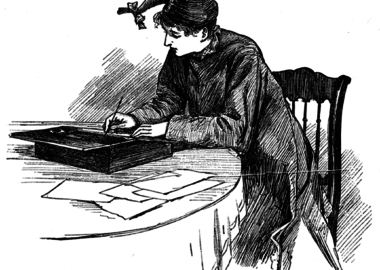 If you’re in marketing today, you know it’s not the 1960s anymore, Don Draper notwithstanding. Claiming “9 out of 10 doctors agree” will not cause the world to beat a path to your door. You know it’s not even the 2000s anymore – gently ironic hipsters from central casting have sold all the razors and hatchbacks they’re going to sell. You know there’s now countless means to connect with billions of people, and countless other brands clamouring for attention. But you know that nobody wants to be yelled at. In this age of ubiquitous marketing, people’s BS detectors have never been so finely tuned. You know that if you’re not honest you’ll be ridiculed, or worse, ignored.
If you’re in marketing today, you know it’s not the 1960s anymore, Don Draper notwithstanding. Claiming “9 out of 10 doctors agree” will not cause the world to beat a path to your door. You know it’s not even the 2000s anymore – gently ironic hipsters from central casting have sold all the razors and hatchbacks they’re going to sell. You know there’s now countless means to connect with billions of people, and countless other brands clamouring for attention. But you know that nobody wants to be yelled at. In this age of ubiquitous marketing, people’s BS detectors have never been so finely tuned. You know that if you’re not honest you’ll be ridiculed, or worse, ignored.
If you came here, you probably know about the rich power of stories, about how authentic narrative content can spark real engagement. But do you know the trick to making it real, the secret of authenticity, the “1 Simple Trick You Won’t Believe Works!”?
Vulnerability. It’s actually not a trick or a secret at all.
A simple illustration: think of any movie/book/TV show ever that includes two strangers who become close. One of them is aloof and guarded, playing their emotional cards close to their chest, until the crisis – cops break up the party, or the detonator fails, or the aliens incinerate the mothership, it doesn’t matter – and the other reveals, with downcast eyes and maybe a trembling lip: This is actually my parent’s house. Or, I have nothing against Big Dairy, I’m just in love with you. Or, I forgot to charge the plasma cannons because I’m an alcoholic. It doesn’t matter. What matters is that in that moment, when the hidden truth is revealed and the vulnerability comes to light, you know exactly what’s coming next: the connection. The kiss. The happy ending.
Vancouver’s Hootsuite embraced their vulnerability in a recent promotional video. Hootsuite is one of the most popular social media management tools in the world, but until recently the app wasn’t much to look at (it was hideous). To announce a redesign, they made a video of Hooters, let’s say, reading passionate and profane tweets about the old look. The result is hilarious, and shows a company that is honest, good-humoured, and willing to listen. They took their biggest weakness and, in a clever bit of marketing jiu-jitsu, turned it into a strength.
That unguarded honesty is essential for a compelling story. In the context of brand engagement, vulnerability is what tips it from marketing to storytelling, an honest effort to engage and connect with people. Nobody (except shareholders) wants to hear about an unbroken string of successes, each more glorious than the last. That’s why your “perfect” friend’s Facebook feed is so annoying. People want to hear a story that includes setbacks, low points, mistakes, and how you overcame them, or didn’t. They want the truth, and if they hear it, they’ll listen.
Our instinct is to resist showing vulnerability, to hide the “bad” stuff and trumpet the good stuff from the rooftops. But the paradox of vulnerability is its power. Revealing it shows strength, because it takes confidence to display your weaknesses. It builds trust, because it shows you have nothing to hide. And it’s honest, because fears, weaknesses, and the occasional blunder – like death, taxes, and hipster gentrification – are universal. To show vulnerability is to show you’re human.
There can be moments working with our team when things get a bit intense. We’ll encourage you to reveal the lows along with the highs, and that’s not an easy thing to do. But it’s immensely valuable. And people are hardly ever physically injured in the process – we won’t ask you to blow up a dairy farm or battle aliens, just to tell your story as honestly as you can. You’ll be glad you did.




